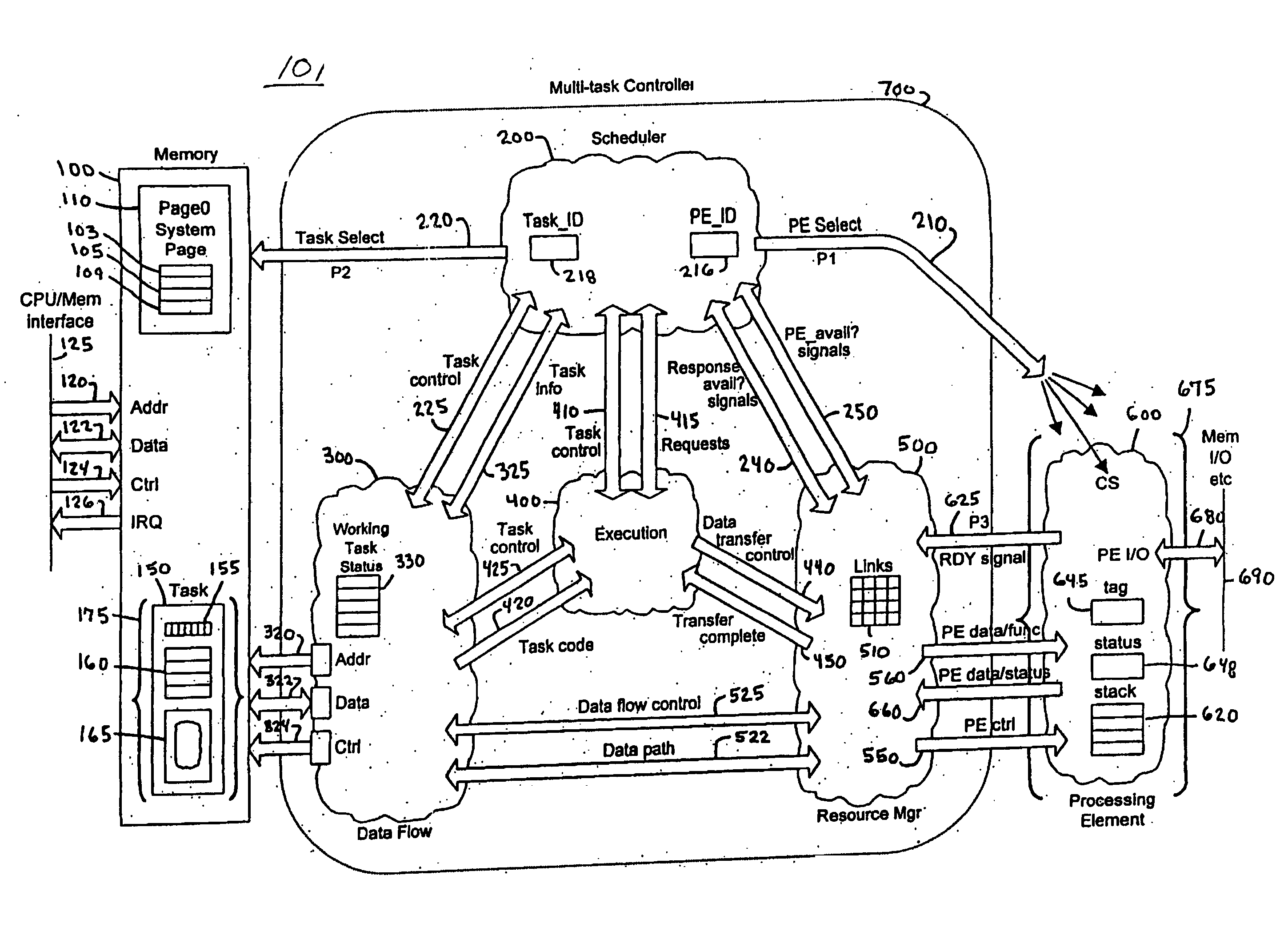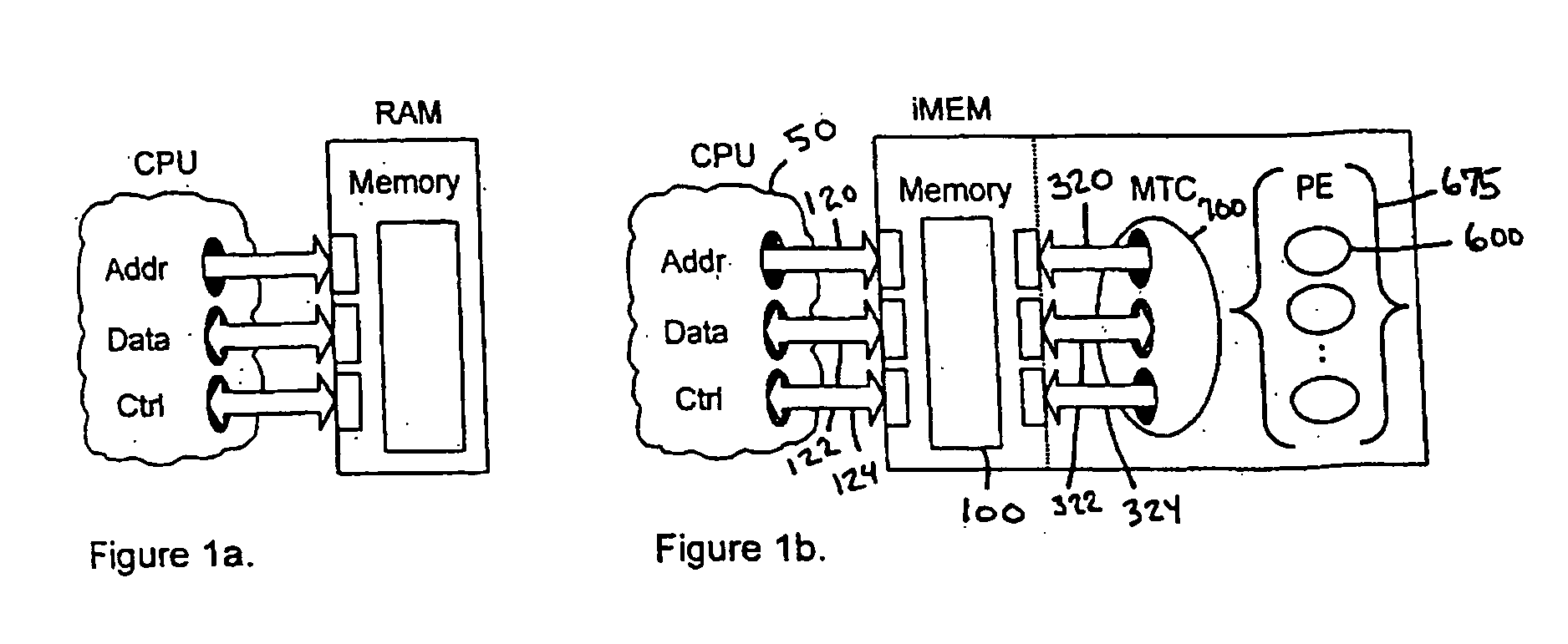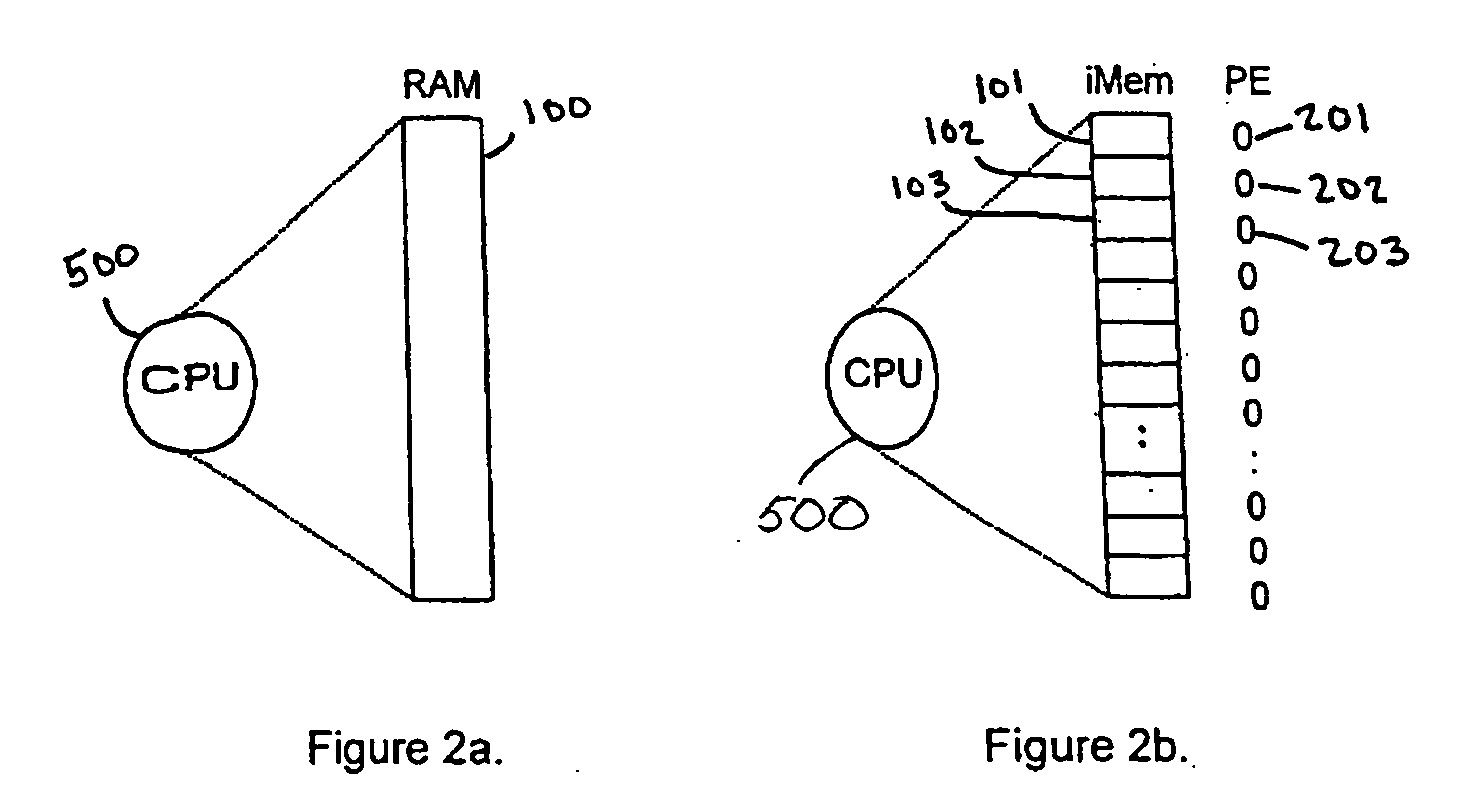iMEM task index register architecture
a task index and register technology, applied in the field of computer design and computer architecture, can solve problems such as memory latency, compiler complexity, multi-processor coordination, etc., and achieve the effect of extraordinary capability
- Summary
- Abstract
- Description
- Claims
- Application Information
AI Technical Summary
Benefits of technology
Problems solved by technology
Method used
Image
Examples
Embodiment Construction
The iMEM Structure
[0085] Common to all of the above attempts to solve the memory latency problem, except Cybernetic's and Micron's, is maintenance of the CPU-memory dichotomy, i.e., all of the intelligence is positioned in the processor, none in the memory. The invention described herein alters this architecture as shown in FIG. 1B. The processor characteristics include (i) autonomous processing; (ii) local memory space(s) access; and (iii) I / O channels. The memory characteristics include (i) an address bus; (ii) a data bus; and (iii) a control bus (Read, Write, Enable, Ready, etc.). The intelligent memory characteristics include: (i) an address bus; (ii) a data bus; (iii) a control bus; (iv) processing disabled by default; (v) processing enabled via the memory interface; and (vi) optional I / O channels.
[0086] The iMEM device looks like classical memory to the CPU 50 and responds as such to the CPU address 120, control 124, and data busses 122. Within the iMEM, however, exists con...
PUM
 Login to View More
Login to View More Abstract
Description
Claims
Application Information
 Login to View More
Login to View More - R&D
- Intellectual Property
- Life Sciences
- Materials
- Tech Scout
- Unparalleled Data Quality
- Higher Quality Content
- 60% Fewer Hallucinations
Browse by: Latest US Patents, China's latest patents, Technical Efficacy Thesaurus, Application Domain, Technology Topic, Popular Technical Reports.
© 2025 PatSnap. All rights reserved.Legal|Privacy policy|Modern Slavery Act Transparency Statement|Sitemap|About US| Contact US: help@patsnap.com



